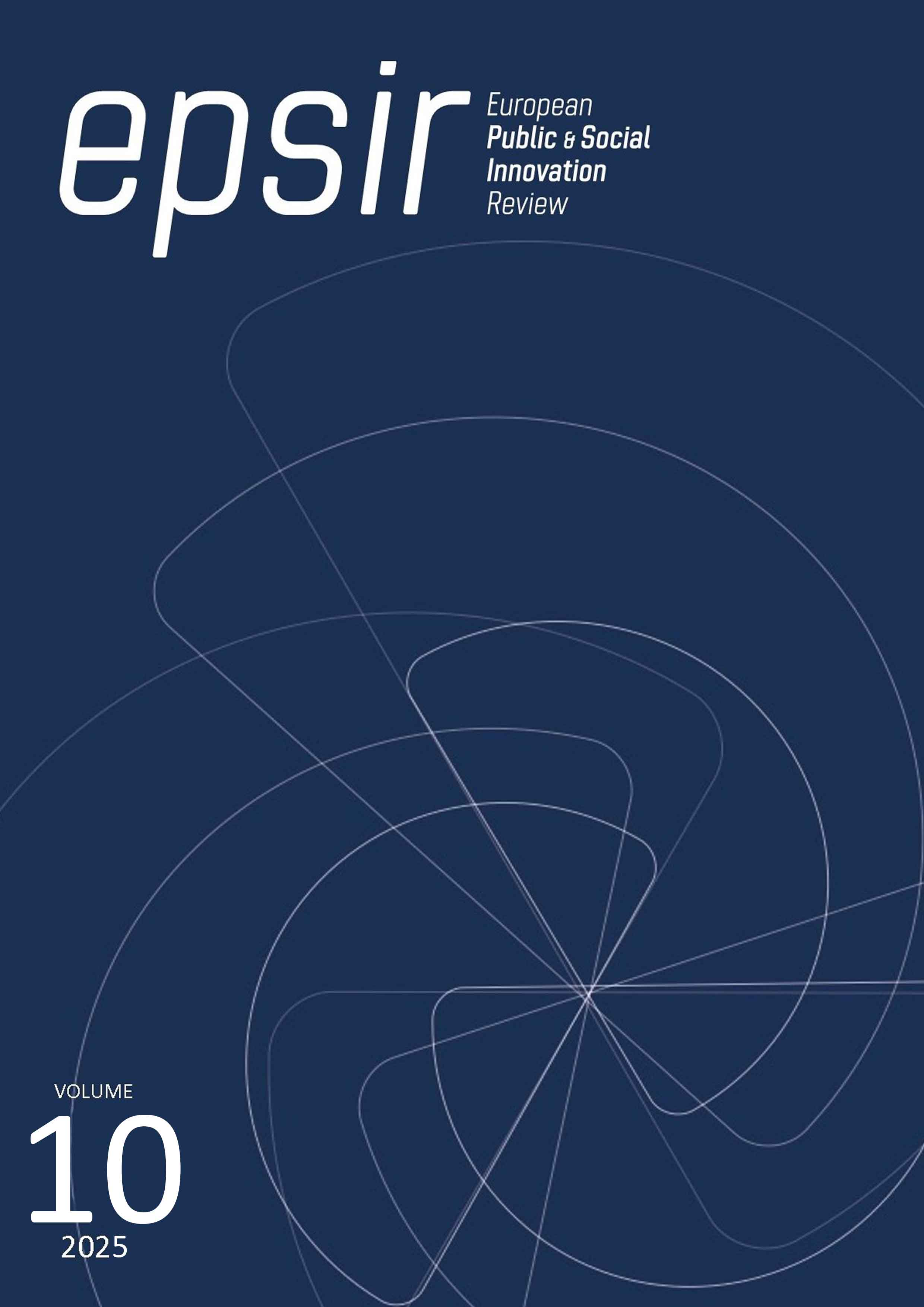Thoughts on the social and educational function of art
DOI:
https://doi.org/10.31637/epsir-2025-1153Keywords:
art, abstraction, utility, work, artist, society, education, happinessAbstract
Introduction: Art exists beyond utility and concrete purpose, operating from a state of simply “being.” Based on this premise, the text seeks to differentiate how imaginative and creative processes, initially generated without intentionality, later acquire a “salvific” mission with social and educational implications, influenced by the historical perception of various human groups. Methodology: The approach is interdisciplinary, combining aesthetic-critical reflection, socio-historical analysis and synthesis, and empirical educational attempts. Discussion: The analysis explores how art, in its abstraction, transcends attempts at concretion. However, individual works offer glimpses into the primary conception of art and its transformations over time. Results and Conclusions: Art enables humans to know themselves, understand others, and preserve values like coherence and the joy of living, fostering the integration of new elements and the rejection of the obsolete or harmful for social and personal stability.
Downloads
References
Alain (1920). Système des Beaux-Arts. Gallimard.
Arnheim, R. (1993). Consideraciones sobre la educación artística. Paidós.
Chaves de Tobar, M. (2013). Música, Educación y Arte. ARTSEDUCA, 5, 22-43.
Contou, M. (s.f.). L'ART est-il une activité essentielle pour tout homme et pour la société? Apprendre la Philosophie. https://www.culturellement.fr/2736-2
Dubois, C. (2022). Qu’est-ce que l’art et à quoi ça sert ? Art X Terra. https://www.artxterra.com/quest-ce-que-lart-et-a-quoi-ca-sert%E2%80%89
Gauthier, R. A. y Jolif, J. Y. (1970). L’Éthique à Nicomaque. Peeters/Nauwelaerts.
González Santos, M. M., Guarnizo Delgado, J. B., Ortega Arcos, W. E. y García González, V. M. (2017). Arte y Educación. Revista Científica Mundo de la Investigación y el Conocimiento, 1(5), 1011-1022.
Greene, M. (2005). Liberar la imaginación: ensayos sobre educación, arte y cambio social. Graó.
Heidegger, M. (2010). Caminos de Bosque. Alianza Editorial.
Jacquard, A. (2006). Mon utopie. Éditions de Noyelles.
Martí, J. (1964). Obras completas, Vol. III. Jorge Quintana.
Ministère de l'éducation et de la Jeunesse du Manitoba. (2003). Les arts au sein de l'éducation-Ébauche de document de fondement. http://www.edu.gov.mb.ca/m12/frpub/ped/arts/arts_edu/index.html
Nietzsche, F. (2006). La voluntad de poder. Edaf.
Nolin, C.-Ph. (2020). L’art est un média de masse. Lac-des-Plages.
Platón (2008). Diálogos, Vol. III. Gredos.
Platón (2010). Diálogos, Vol. I. Gredos.
Platón (2015). Diálogos, Vol. IX. Gredos.
Quesada, R. M. (2008). Liberar la imaginación: ensayos sobre educación, arte y cambio social. Perfiles educativos, 30(121), 171-174. DOI: https://doi.org/10.22201/iisue.24486167e.2008.121.61042
Ramírez Garrido, J. D. y Hernández León, E. (2016). Arte Mente y Sociedad. De la experiencia estética y otras indagaciones. En Artes y Educación y Educación (pp. 117-127). Universidad Pablo de Olavide.
Rosset, T. (2013). La fonction sociale de l'art contemporain. Histoire et civilisation. https://n9.cl/bwj9r
Sandholz, S. (2021). Ciencia, arte y política: poderosa alianza para cambiar las ciudades. El País.
Schopenhauer, A. (2004). El mundo como voluntad y representación. Trotta.
Svoboda, K. (1927). L'Esthétique d’Aristote. Faculté de Philosophie de l’Université de Brno.
Downloads
Published
How to Cite
Issue
Section
License
Copyright (c) 2024 María José Sánchez Usón

This work is licensed under a Creative Commons Attribution-NonCommercial-NoDerivatives 4.0 International License.
Authors who publish with this journal agree to the following terms:- Authors retain copyright and grant the journal right of first publication with the work simultaneously licensed under Creative Commons Non Commercial, No Derivatives Attribution 4.0. International (CC BY-NC-ND 4.0.), that allows others to share the work with an acknowledgement of the work's authorship and initial publication in this journal.
- Authors are able to enter into separate, additional contractual arrangements for the non-exclusive distribution of the journal's published version of the work (e.g., post it to an institutional repository or publish it in a book), with an acknowledgement of its initial publication in this journal.
- Authors are permitted and encouraged to post their work online (e.g., in institutional repositories or on their website) prior to and during the submission process, as it can lead to productive exchanges, as well as earlier and greater citation of published work (See The Effect of Open Access).



